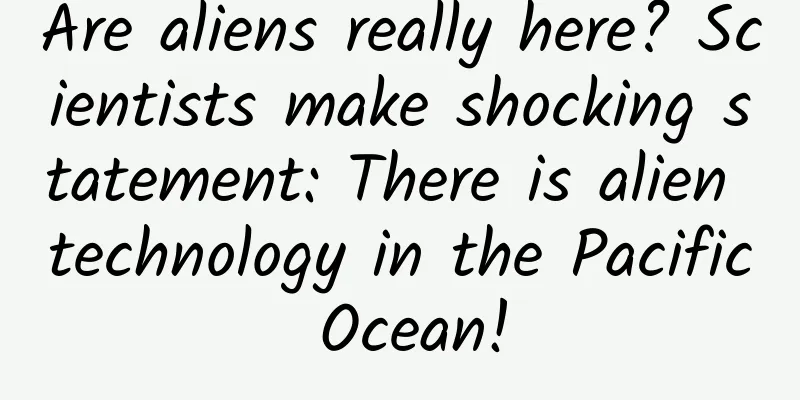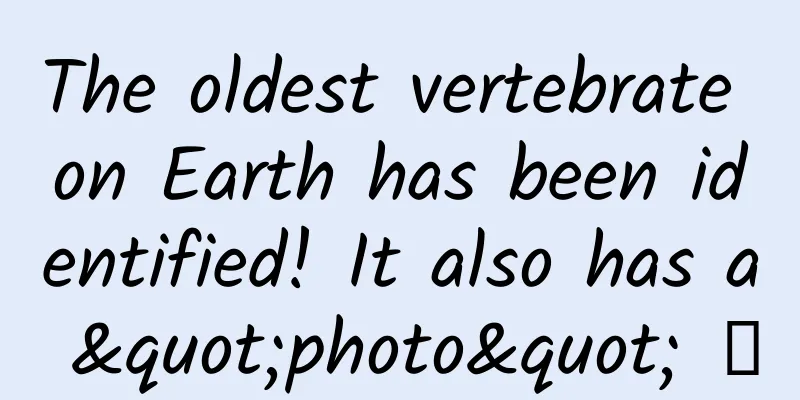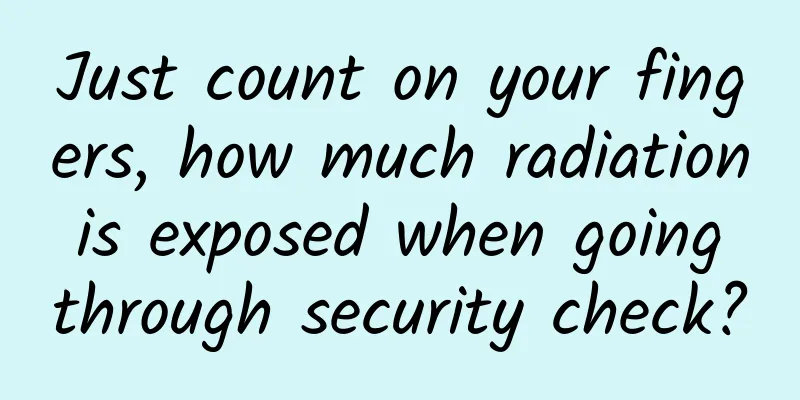Are aliens really here? Scientists make shocking statement: There is alien technology in the Pacific Ocean!

|
The claim that "aliens" left technology in the Pacific Ocean is indeed true and not groundless. It was a shocking statement made by a scientist who is physicist Avi Loeb of Harvard University in the United States. On April 20, he said that a meteor that crashed into the Pacific Ocean in January 2014 was actually "alien technology" and suggested that it be salvaged and investigated. The legend of aliens has been popular for a century. Many people believe that aliens have been to Earth and often appear around the world. Many rumors of UFOs and even flying saucers, as well as the silly and funny image of aliens with big heads and small bodies, seem to be evidence. But so far, no such legend or phenomenon has been truly scientifically and rigorously verified. So was the meteor that fell into the Pacific Ocean more than eight years ago really the work of aliens? Let's analyze it together. The scientific analysis concluded that the Pacific Ocean fallout must have come from outside the solar system. This conclusion was not made by Avi Loeb, but was based on a memo issued by the U.S. Space Command last week. The memo was signed by Lieutenant General John E. Shaw, deputy commander of the U.S. Space Command, and was based on the findings of Dr. Joel Moser, chief scientist of the U.S. Space Command. Many scientists believe that a meteor that hit the Earth in January 2014 did come from outside the solar system. Relevant data show that the object was about 0.45 meters in diameter and entered the Earth's atmosphere at a speed of more than 210,000 kilometers per hour. Based on its speed and trajectory, the credibility of its origin from interstellar space outside the solar system is greater than 99.999%. Why can we determine that this meteor is not from the solar system based on its trajectory and speed? The reason is simple. All celestial bodies in the solar system are controlled by the gravity of the sun, so their trajectories and speeds are fixed and have significant characteristics. The reason why small celestial bodies in the solar system fly towards the sun is because they are pulled by the sun's gravity; and when they move away from the sun, they are still pulled by the sun's gravity. So their speed is limited. If the speed is too fast, they will escape from the solar system. So where does the force that allows them to escape from the sun's gravity come from? The only explanation is that this celestial body can only come from outside the solar system. Affected by the sun's gravity, an asteroid will get faster and faster as it approaches the sun, and slower and slower as it moves away from the sun. In this way, scientists can know whether the asteroid is from inside or outside the solar system through simple calculations. For example, according to the calculation of the solar escape velocity, when a celestial body moves away from the sun, its escape velocity is about 42 kilometers per second when it reaches the Earth's orbit, and about 34 kilometers per second when it reaches the Mars orbit. In other words, as long as it exceeds this speed, the sun will not be able to retain the celestial body, which can prove that the celestial body comes from outside the solar system. On October 19, 2017, scientists accidentally discovered a very fast asteroid, which is about 30 million kilometers away from the Earth and is moving away from the sun at a speed of about 49 kilometers per second. Scientists immediately believed that this was the first interstellar object discovered by humans to enter the solar system. This asteroid is a bit like a cigar, about 400 meters long and 40 meters wide. Scientists named this asteroid 1I/'Oumuamua, commonly known as "Oumuamua". According to calculations, Oumuamua entered the solar system from the direction of Lyra at a speed of about 26 kilometers per second. Its trajectory was almost perpendicular to the ecliptic plane. When it reached perihelion, its maximum speed reached 87.71 kilometers per second. It then turned around the sun and flew away. Because it is too small, it has long been invisible to the telescope. According to its trajectory and speed, it has now flown out of the orbit of Neptune and its speed has dropped below 27 kilometers per second. If it is confirmed that the object that fell in the Pacific Ocean in 2014 was an extrasolar object, Oumuamua will have to take a back seat. Can we conclude that an extrasolar object is a product of aliens? No, of course it cannot be so simple. In fact, the memorandum of the US Space Command did not mention anything about aliens, but Professor Avi of Harvard University proposed on April 20 that this is likely to be alien technology and suggested salvaging it. That's all, and he didn't provide any more evidence or details. This reminds people of his insights on Oumuamua. In his paper published in 2018 and his book "Extraterrestrial Life" published in 2021, he believed that Oumuamua was not an asteroid or comet, but evidence of extraterrestrial intelligence, and was an abandoned "light sail" of an alien spacecraft. Of course, this is just his personal opinion, and it has hardly received any support from scientists. On the contrary, his inferences have been questioned and countered by many rigorous scientists. Later studies have proved that the acceleration phenomenon of Oumuamua when it left the sun was the result of the evaporation and eruption of its own volatile substances under the radiation of sunlight. Loeb also admitted that his papers and books on these extraterrestrial objects are based on high speculation, but he believes that science can only progress if it is willing to consider all possibilities. I certainly agree with this statement. Science often originates from interest and curiosity. Only by continuous exploration can we make discoveries and make continuous progress. But this does not mean that science should not use evidence and theory. Only results obtained through rigorous logical reasoning and observational experimental evidence are scientific results. Fantasy, conjecture and inference will never become science without evidence support. Therefore, I think that the current evidence can only confirm that the meteorite that fell into the Pacific Ocean in 2014 was extrasolar material, and it is too early to say that it was alien technology. However, the suggestion of fishing it out and taking a look is still valuable, because even if it is extrasolar material, humans have not yet had a glimpse of it. Can a meteorite that falls into the Pacific Ocean be fished out? Some people have proposed launching a probe to chase Oumuamua, and after catching up with it, we will know what the joke is. Some scientists have even proposed a plan, believing that if the probe is launched in 2028 and accelerated by Jupiter's gravitational slingshot effect, it will be able to catch up with Oumuamua in 18 years, around 2050. How much would it cost? At least several billion dollars. In fact, it would also cost a lot to retrieve the crashed meteorite in the Pacific Ocean. You should know that this meteorite is only 0.45 meters in size. We don’t know the exact location of its fall, but only a rough direction. It is likely to explode and break when it falls to the water surface. The small fragments are scattered over a large area and have sunk in the mud on the seabed for 8 years. It is like looking for a needle in a haystack. It is not easy to find them. You know, a Boeing 777 passenger plane that also disappeared in 2014 was Malaysia Airlines Flight 370. Such a huge aircraft was suspected to have crashed in the Indian Ocean. More than a dozen countries have dispatched a large number of forces to search for it for a long time, but the main body of the wreckage has not been found yet. It is conceivable that in the Pacific Ocean, which is much larger than the Indian Ocean, it may be more difficult to find the fallen small meteorite than to catch up with Oumuamua. If it is really alien technology, I think it is worth it no matter how much it costs. But the problem is that the correlation between this meteorite and aliens is too small, and it is just one person's guess. Like all readers, Spacetime Communications is eager to discover aliens as soon as possible, or find even a little bit of alien product technology, which will make a leap forward for human technology. However, scientific matters must be treated scientifically, and random speculation is not a scientific attitude. I do not deny that Avi Loeb is a physicist, but I think his speculation about Oumuamua and the Pacific meteorite incident is just his personal speculation, and it is not necessary to take it seriously. What do you think about this? Welcome to discuss, thank you for reading. The copyright of Space-Time Communication is original. Infringement and plagiarism are unethical behavior. Please understand and cooperate. |
>>: National Child Vaccination Day: Here’s what parents should know
Recommend
A zero-cost online earning project with no threshold, integrating WeChat groups to realize multiple monetization and earning 300+ per day
A zero-cost online earning project with no thresh...
How many days will the Qingming Festival holiday be in 2022? Which day should I work to make up for the holiday? Attached is the latest official notice!
The Qingming Festival is just a few days away, and...
The eruption of a volcano thousands of miles away actually gave the northern hemisphere a chill in the summer
The unexpected appearance of the "fish chase...
Foreign film and television commentary videos, batch download, translate into Chinese pseudo-original, upload to Chinese video platforms to earn revenue
Foreign film and television commentary videos, ba...
35 Douyin operation tools to attract fans and monetize!
Focusing on different stages, we will introduce t...
Beginner’s guide to copywriting: What’s the difference between a copywriter with a monthly salary of 3,000 and one with a monthly salary of 30,000?
It is said that the chain of contempt of advertis...
Building a traffic conversion analysis system from 0 to 1
Traffic is so expensive and conversion is so low!...
If you can’t get Bing Dwen Dwen, then get its “rock sugar shell”!
Who is the latest “new top star”? Bing Dwen Dwen ...
The 2021 Douyin account management guide is here!
Although the competition in Douyin live streaming...
"Creating a Precise Traffic Matrix for Video Marketing" helps novices build a fan-increasing system!
Training course video content introduction: The c...
The extraordinary existence in porcelain - Yongle and Xuande blue and white porcelain
Blue and white porcelain originated in the Tang D...
Li Xingxing's practical editing training camp will end in January 2022 [HD quality with materials]
Li Xingxing's practical editing training camp...
For a sprained joint, should you apply heat or cold?
In daily life, various joint sprains are common, ...
Are TVs at CES getting too complicated?
On January 7, the 2015 International Consumer Ele...
Kunming Hun Tea Tasting 2022 exclusive Hun Sang experience is waiting for you!
Kunming Hun Tea Tasting 2021 Exclusive Hun Sang E...









